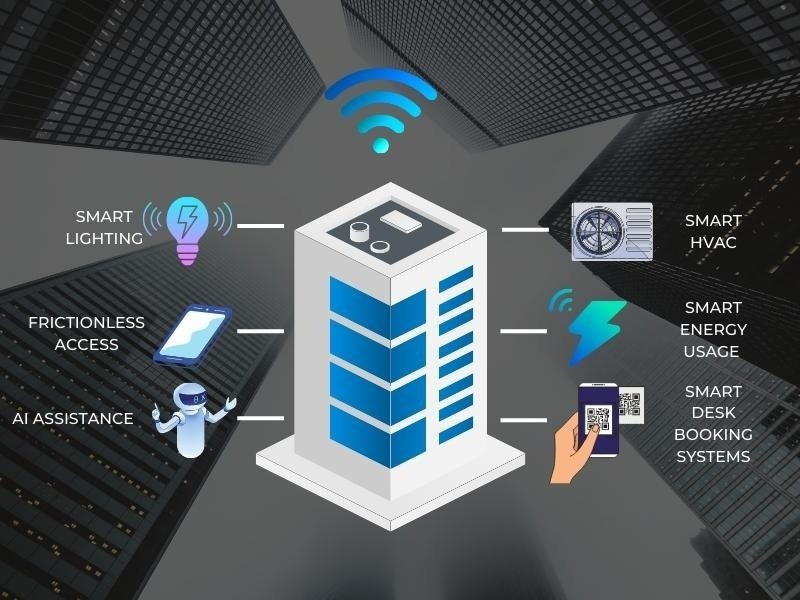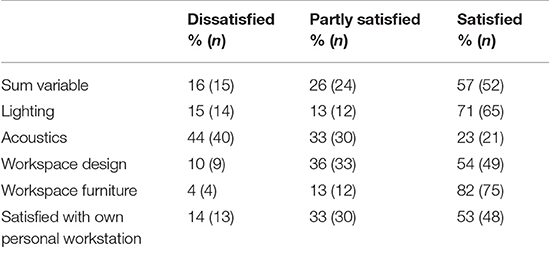Designing Tomorrow's Workplaces: 5 ways ai is influencing work environments
The commercial interior industry is undergoing a transformation with the integration of artificial intelligence. This revolutionary technology utilizes AI-powered algorithms to analyze various data points, including employee preferences and work patterns. The result is the creation of optimized office layouts that enhance efficiency and encourage collaboration among employees. Thanks to AI-generated data, data-driven decision making becomes possible, allowing furniture manufacturers and designers to adapt their products to meet the evolving needs of the workplace.
As technology continues to advance at an unprecedented pace, industries across the board are experiencing significant transformations. The commercial interior industry is no exception and is ready to undergo a revolution with the integration of artificial intelligence (AI) in the workplace. AI's impact on the commercial furniture industry promises to enhance productivity, optimize space utilization, and provide personalized experiences for clients and staff. Let’s explore how AI is reshaping the modern workplace.
1. Smarter Office Design
AI-powered algorithms are transforming the way office spaces are designed. By analyzing substantial amounts of data, including employee preferences, work patterns, and collaboration requirements, AI can generate optimal office layouts. These layouts are tailored to maximize efficiency, promote creativity, and foster collaboration among staff. It can also consider factors such as natural lighting, noise levels, and air quality to create healthier and more productive work environments.
2. Intelligent Space Utilization
In large office buildings, it is often challenging to determine the optimal utilization of space. AI can play a crucial role in addressing this issue. Through real-time occupancy tracking and sensor technologies, AI algorithms can monitor how different spaces are used throughout the day. This data can be used to optimize space allocation, identify underutilized areas, and make informed decisions on office expansions or reconfigurations. By minimizing wasted space, companies can reduce costs and create more flexible and adaptable work environments.
3. Personalized Employee Experiences
AI empowers businesses to provide personalized experiences for their employees. Smart furniture embedded with sensors and AI capabilities can learn individual preferences, such as preferred desk height, chair settings, and lighting conditions. It can also anticipate employee requirements, such as automatically adjusting temperature or suggesting break times based on workload and stress levels.
4. Enhanced Employee Well-being and Safety
Workplace well-being and safety are now considered critical for organizations. AI can help address these issues by monitoring environmental factors and proactively identifying potential dangers. For instance, AI-powered systems can detect and respond to air quality issues, ensuring a healthier workspace for employees. Additionally, AI can provide insights on ergonomics and posture, reminding employees to take breaks, stretch, or adjust their seating positions to prevent long-term health issues.
5. Data-Driven Decision Making
Lastly, AI generates great amounts of data that can inform decision-making processes in the commercial furniture industry. By analyzing this data, businesses can gain valuable insights into employee behavior, workspace utilization, and furniture performance. These insights can guide furniture manufacturers and designers in creating products that align with changing workplace needs, optimizing comfort, functionality, and aesthetics.
The commercial furniture industry is on the verge of a transformative journey with the integration of AI in the workplace. By leveraging AI technologies, businesses can revolutionize office design, optimize space utilization, personalize employee experiences, enhance well-being and safety, and make data-driven decisions. The future of the commercial furniture industry will be characterized by dynamic, adaptable, and intelligent workspaces that prioritize employee comfort, productivity, and satisfaction. Embracing AI in the workplace will redefine how we perceive and experience the modern workplace.
REDUCING the sedentary work day
We’ve all heard it: “sitting is the new smoking!” Such bombastic statements can lead to skepticism and assumptions of sensationalist claims backed by little research. But the numbers are in. And while your desk won’t give you cancer, there are genuine health problems linked with leading a sedentary lifestyle.
We’ve all heard it: “sitting is the new smoking!” Such bombastic statements can lead to skepticism and assumptions of sensationalist claims backed by little research. But the numbers are in. And while your desk won’t give you cancer, there are genuine health problems linked with leading a sedentary lifestyle.
Consider your day. You sleep (hopefully for eight hours), you get ready, you commute, you sit at your desk, get up for the printer a few times or to go sit (yet again) in a meeting, you commute once more and only a few hours later, it’s time to go to bed. Even if you get in gym time or a run, you might be spending as many as 18 hours being still; more if you enjoy the occasional Netflix binge.
Even if you hit the gym, a sedentary lifestyle can increase your risk for certain diseases or conditions that could result in premature fatality. Cancer, cardiovascular disease, and Type 2 diabetes are all made more likely by a lifestyle that incorporates very little or only small bursts of activity. But other areas of your health can also be impacted by sitting so much. Studies are now showing that too much inactivity can increase anxiety and depression, in addition to obesity.
Humans have an intrinsic need to be upright and mobile. Interestingly, this doesn’t necessarily mean that you need to sign up for more spin classes or start training for a marathon just to combat the ill effects of sitting too much. Even making the time to go for walks more consistently during the week can have enormous health benefits physically and “above the shoulders,” in terms of reduced anxiety and depression.
Despite its position as a leading contributor for a sedentary lifestyle, the workplace is actually where you can try and make the most improvement (at least, until we go back to the cars from the Flintstones). In fact, health experts are now recommending standing more during your work day as the answer to reducing the harmful effects of all that sitting. Also, taking brief strolls through the day can have even more health benefits than simply standing.
There are many ways to incorporate these changes into your work life; having walking meetings and taking your phone calls while standing are just a few examples. But more than ever, there are now workplace solutions to help break the sedentary cycle. Height-adjustable desks and treadmill desks are changing the office game. Workplaces are ordering community treadmill desks that people can temporarily use while checking email or taking calls.
With these new products in the workplace, marked improvements are being seen not only in maintaining physical health but even with increased work performance. It turns out that the “get the blood flowing” adage rings true: as simple an exercise as walking can increase creativity and productivity and also reduce stress. Many companies are seeing huge benefits from corporate wellness programs that encourage more movement in the office. We’re all motivated to perform better for companies that have our interests at heart, even on as personal a level as caring for our health.
Consider the benefits that slight adjustments in your daily routine can produce and encourage your employer to do their part in making the workplace better suited for activity. Make use of office tools and culture that can get you moving more. Stand up, stretch your legs and talk to someone next time you need information. See if you can get your boss on board with turning your next meeting into a stroll. Walk a lap around the office next time you move your desk to standing height. Savor the resulting changes to your well-being and endeavor to make even more positive decisions.








